 1987 Nissan Bluebird (U12) Dimensions, Size & Specs
1987 Nissan Bluebird (U12) Dimensions, Size & SpecsMeasurements of the 1987 Nissan Bluebird, engineered for optimal performance and comfort
| Dimensions | |
|---|---|
| Length: | 4520 mm178.0 in14.8 ft |
| Width: | 1690 mm66.5 in5.5 ft |
| Height: | 1375 mm54.1 in4.5 ft |
The Nissan Bluebird U12 is a notable sedan generation produced between 1987 and 1991, offering a blend of compact dimensions with practical design typical of late 1980s Japanese automobiles. Measuring 4520 mm (177.9 inches) in length, 1690 mm (66.5 inches) in width, and standing at 1375 mm (54.1 inches) tall, the U12 Bluebird fits comfortably within the compact to mid-size sedan category. Its proportions provided a spacious yet manageable vehicle suited for urban driving as well as longer commutes.
The U12 generation emphasized a balance between interior roominess and exterior size, making it ideal for drivers seeking efficiency without sacrificing comfort. Its length of 4.52 meters allowed ample cabin space and trunk capacity, while the width of 1.69 meters ensured good road presence but easy maneuverability in tight city streets and parking situations. At a height of 1.375 meters, the Bluebird delivered a low center of gravity for improved handling dynamics.
Throughout its production run from 1987 to 1991, the Bluebird (U12) maintained Nissan’s reputation for reliability and solid engineering. This sedan served as a practical family car or daily driver in diverse markets, featuring a design that aligned with late 80s automotive trends yet remained functional. When compared to its contemporaries, the Bluebird's size was competitive within its class, striking a balance between compactness and interior comfort, a factor that continues to make it a respected classic among enthusiasts today.
Discover the standout features that make the 1987 Nissan Bluebird a leader in its class
Have a question? Please check our knowledgebase first.
The Nissan Bluebird U12 sedan, produced between 1987 and 1991, has a length of 4520 millimeters (177.95 inches), making it a mid-sized sedan suitable for comfortable seating and maneuverability. Its width measures 1690 millimeters (66.54 inches), providing a relatively narrow footprint that eases urban driving and parking. The vehicle stands 1375 millimeters tall (54.13 inches), contributing to its sleek and aerodynamic profile. These dimensions place the U12 characteristics in a balanced range typical for sedans of its class during that period, offering a combination of interior space and external compactness.
Yes, the Nissan Bluebird U12 fits comfortably into a standard residential garage. The average width of a single-car garage door is around 2438 millimeters (96 inches), and the Bluebird's width is 1690 millimeters (66.54 inches), leaving ample room for safe entry and exit. Its length of 4520 millimeters (177.95 inches) is well within typical garage lengths, which usually exceed 5 meters (197 inches). The vehicle's height of 1375 millimeters (54.13 inches) is also significantly lower than typical garage heights, so clearance is not an issue. Overall, parking the Bluebird U12 in a common household garage will be straightforward without spatial constraints.
The Nissan Bluebird U12, launched in 1987, was larger in length, width, and height compared to its predecessor, the U11 generation. Notably, the U12’s length is 4520 millimeters (177.95 inches), which represents a noticeable increase over the previous generation, affording improved cabin space and trunk capacity. Its width of 1690 millimeters (66.54 inches) also widened slightly, enhancing interior comfort and road presence. The height at 1375 millimeters (54.13 inches) maintained a low and sleek stance but offered better headroom for passengers. Overall, the U12 was designed with modernized aesthetics and increased dimensions aimed at enhancing comfort and performance compared to the earlier U11 generation.
Compared to other mid-size sedans produced in the late 1980s to early 1990s, the Nissan Bluebird U12's dimensions place it comfortably within the standard range for the class. With a length of 4520 millimeters (177.95 inches), it is comparable to models like the Toyota Camry and Honda Accord of that period. Its width of 1690 millimeters (66.54 inches) is slightly narrower than some competitors, which may contribute to more agile urban handling but slightly reduced interior shoulder room. The height of 1375 millimeters (54.13 inches) is fairly typical for sleek mid-size sedans of that time, offering good aerodynamics while maintaining passenger comfort. In summary, the Bluebird U12 was dimensionally competitive with its peers, balancing external compactness and internal spaciousness effectively.
Given the Nissan Bluebird U12’s exterior dimensions—a length of 4520 mm (177.95 inches), width of 1690 mm (66.54 inches), and height of 1375 mm (54.13 inches)—the interior space is optimized for mid-size sedan occupants. While exact interior dimensions vary, the vehicle offers ample legroom and headroom for front and rear passengers suitable for family or commuter use. The moderate width ensures two to three adults comfortably fit in the rear seat bench, with slight shoulder space constraints compared to wider competitors. The relatively low height contributes to a sleek exterior but might affect tall passengers’ headroom slightly. Overall, the U12 balances sporty styling with practical seating and cargo area dimensions, typical of late 1980s mid-sized sedans.
The Nissan Bluebird U12 stands at a height of 1375 millimeters (54.13 inches), with ground clearance specifics generally around 140-160 millimeters (5.5-6.3 inches) depending on the exact market and trim. This moderately low height supports a lower center of gravity, which enhances stability and cornering performance characteristic of sedans focusing on balanced, controlled driving dynamics. The ground clearance is suitable for most paved roads but may limit off-road capability or high-roughness terrain traversal. Thus, the U12 delivers confident, composed handling in urban and highway environments, contributing to its appeal as a practical yet engaging sedan.
The Nissan Bluebird U12 measures 1690 millimeters (66.54 inches) in width, which is somewhat narrower compared to many modern mid-size sedans but consistent with cars from its production era (1987-1991). This narrower width favors easier maneuverability in tight urban environments and parking situations, enhancing driver confidence in congested areas. However, this might slightly limit shoulder room inside the cabin, particularly for rear passengers sitting side-by-side. Despite this, the width strikes a practical balance, providing an efficient exterior footprint without significantly compromising on interior spaciousness or handling characteristics.
The exact curb weight for the Nissan Bluebird U12 varies depending on engine configuration and trim, typically ranging between approximately 1100 to 1300 kilograms (2425 to 2866 pounds). This relatively moderate weight supports a favorable power-to-weight ratio for smooth acceleration and agile handling since the vehicle was designed with efficiency and nimbleness in mind. The lighter curb weight positively influences fuel economy, especially important during the late 1980s when fuel efficiency was a key concern for buyers. Additionally, the U12’s weight distribution aided in delivering balanced ride quality and stability during cornering and braking, enhancing overall driving reliability.
While precise trunk volume figures for the Nissan Bluebird U12 are somewhat scarce, the sedan’s length of 4520 mm (177.95 inches) and traditionally efficient rear design provide a moderately sized trunk suitable for most daily needs. The cargo area is spacious enough to accommodate luggage for up to four passengers, grocery bags, and other typical cargo items without difficulty. Thanks to its external dimensions, the trunk space blends practicality with accessibility, allowing the rear seats to fold down (in some versions) to enhance carrying capacity further. Overall, the boot capacity is suitable for family use, daily commuting, and occasional longer trips.
The Nissan Bluebird U12, produced from 1987 to 1991, introduced several advancements over the earlier U11 generation. These included a more aerodynamic and modern body style that improved fuel efficiency and reduced wind noise. The U12 featured upgrades in suspension systems, offering better ride comfort and handling stability. Mechanically, it offered more sophisticated engine options, with improvements in power output and emissions control, aligning with tightening regulatory standards of the time. Enhanced interior ergonomics and updated technology such as improved instrument clusters and optional electronic features also made the U12 more appealing to contemporary drivers. Overall, the U12 represented a significant step forward in refinement, style, and capability compared to its predecessors.
Discover similar sized cars.
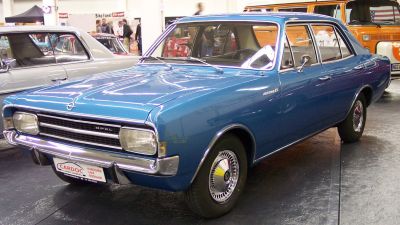
| Production: | 1966-1971 |
|---|---|
| Model Year: | 1966 |
| Length: | 4550 mm179.1 in |
| Width: | 1758 mm69.2 in |
| Height: | 1453 mm57.2 in |

| Production: | 1986-1991 |
|---|---|
| Model Year: | 1986 |
| Length: | 4520 mm178.0 in |
| Width: | 1710 mm67.3 in |
| Height: | 1400 mm55.1 in |
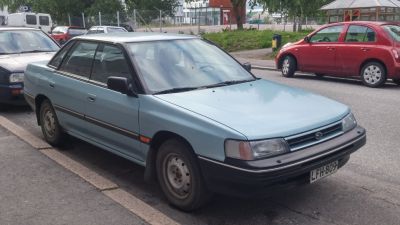
| Production: | 1989-1991 |
|---|---|
| Model Year: | 1989 |
| Length: | 4510 mm177.6 in |
| Width: | 1690 mm66.5 in |
| Height: | 1385 mm54.5 in |
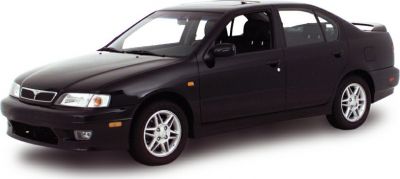
| Production: | 1991-2000 |
|---|---|
| Model Year: | 1991 |
| Length: | 4450-4510 mm175.2-177.6 in |
| Width: | 1700 mm66.9 in |
| Height: | 1400 mm55.1 in |
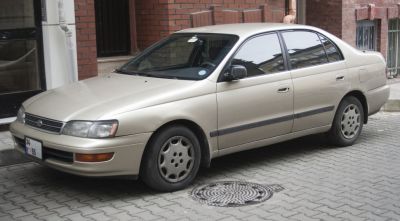
| Production: | 1992-1996 |
|---|---|
| Model Year: | 1992 |
| Length: | 4500-4520 mm177.2-178.0 in |
| Width: | 1695-1740 mm66.7-68.5 in |
| Height: | 1325-1425 mm52.2-56.1 in |

| Production: | 1992-1995 |
|---|---|
| Model Year: | 1993 |
| Length: | 4509 mm177.5 in |
| Width: | 1930 mm76.0 in |
| Height: | 1386 mm54.6 in |
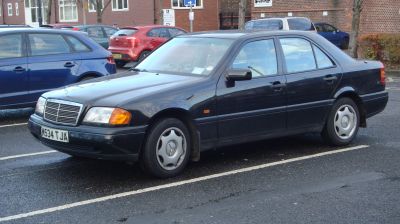
| Production: | 1992-1997 |
|---|---|
| Model Year: | 1993 |
| Length: | 4487 mm176.7 in |
| Width: | 1720 mm67.7 in |
| Height: | 1385-1427 mm54.5-56.2 in |
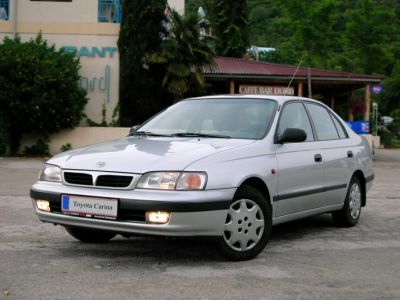
| Production: | 1992-1998 |
|---|---|
| Model Year: | 1993 |
| Length: | 4455-4530 mm175.4-178.3 in |
| Width: | 1695 mm66.7 in |
| Height: | 1395-1410 mm54.9-55.5 in |
